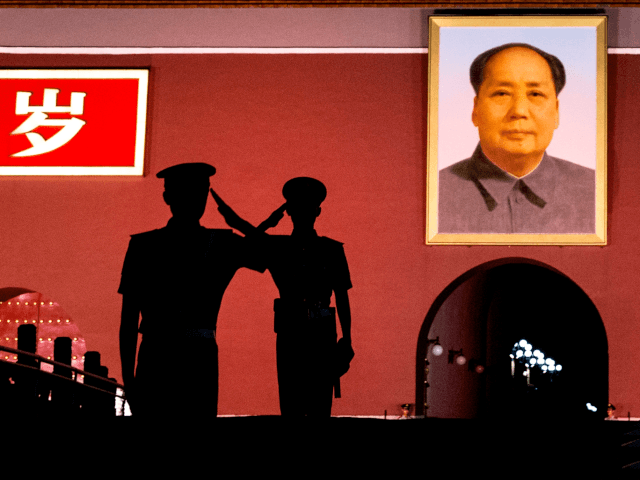China’s campaign to “Sinicize” religion – that is, either make religions completely subordinate to the Communist Party (CCP) or wipe them out altogether – includes a campaign to “exterminate Buddha.”
Buddhists are fond of statues representing the founder of their faith, so the Chinese Communists want to get rid of the statues. One Buddhist temple located in the mountains of Henan province responded to pressure from the CCP by replacing its statues of Buddha with depictions of Communist revolutionary leaders, including Mao Zedong.
Religious liberty webzine Bitter Winter reported this week that the privately-funded Buddhist temple had trouble obtaining the certificate it needed from the Chinese government to operate as a duly licensed place of worship, so it reinvented itself as a “patriotic education base”:
The owner came up with an ingenious plan to make the temple functional and official: he replaced the statues of deities with those of revolutionary leaders. And it worked – the local Religious Affairs Bureau designated the temple a “red patriotic education base,” and Party followers are swarming to the “Chairman Mao Buddha Temple” to pray and worship. But not the Buddha.
One national flag has been placed on top of the temple’s roof and two on either side of the entrance, next to the statues of horseback former revolutionary leaders: On the left is Hua Guofeng (1921-2008) – Mao Zedong’s handpicked successor and the former CCP Chairman and Premier; and on the right – Dong Biwu (1886-1975), one of the founders of the People’s Republic of China.
Right after entering the temple compound, a large statue of Mao Zedong catches the eye. Verses deifying Mao as the “Buddha” are engraved on the statue’s base: “Lord Mao is the new Jade Emperor, who controls the heavens, the earth, and the human world;” “Taoism and Buddhism will be attributed to the teachings of Mao Zedong.
The temple’s Extreme Communist Makeover reportedly included adding a third segment to the iconic yin/yang symbol, a yellow wedge tipped with a red dot representing the glory of Mao, the “red sun” around whom the world revolves. Several other Communist heroes are presented in statue form and identified as “buddhas” ranked beneath Mao, honored as the “Celestial Deity Buddha.” The title of Buddha signifies “awakening” to higher spiritual truth.
The plan seems to have saved the temple from being demolished like so many others, although visitors remarked it was “bizarre” to see militant atheist Mao venerated as an object of worship at a temple.
Students of Buddhism complain the religion has been hollowed out in China by political interference and corruption, turning ancient temples into tourist attractions and monks into extras for kung fu movies.
Modern mainland China produces few influential Buddhist spiritual leaders and the government tries to prevent foreigners from filling the gap. The government carefully monitors religious teachings and co-opts them to spread “patriotic” nationalist and Communist messages.
Even the fabled Shaolin temple, one of the most recognizable symbols of Zen Buddhism around the world, joined the “patriotism drive” last year and hoisted the Chinese national flag for the first time in fifteen centuries.
“Buddhism is meant to cultivate the mind, body, and spirit – what has it got to do with politics? Haven’t the monks in the monastery renounced worldly living? I feel uncomfortable and just think that raising the national flag at the temple is simply not appropriate,” a disturbed Buddhist wrote on Chinese social media after the flag-raising at the Shaolin temple.
While mainland Chinese Buddhism has been co-opted and commercialized by the Communist Party and money-hungry local officials, Tibetan Buddhism is seen as an outright menace to state security, an obstacle to be removed so Beijing can assimilate the people of Tibet and erase their cultural identity.

COMMENTS
Please let us know if you're having issues with commenting.